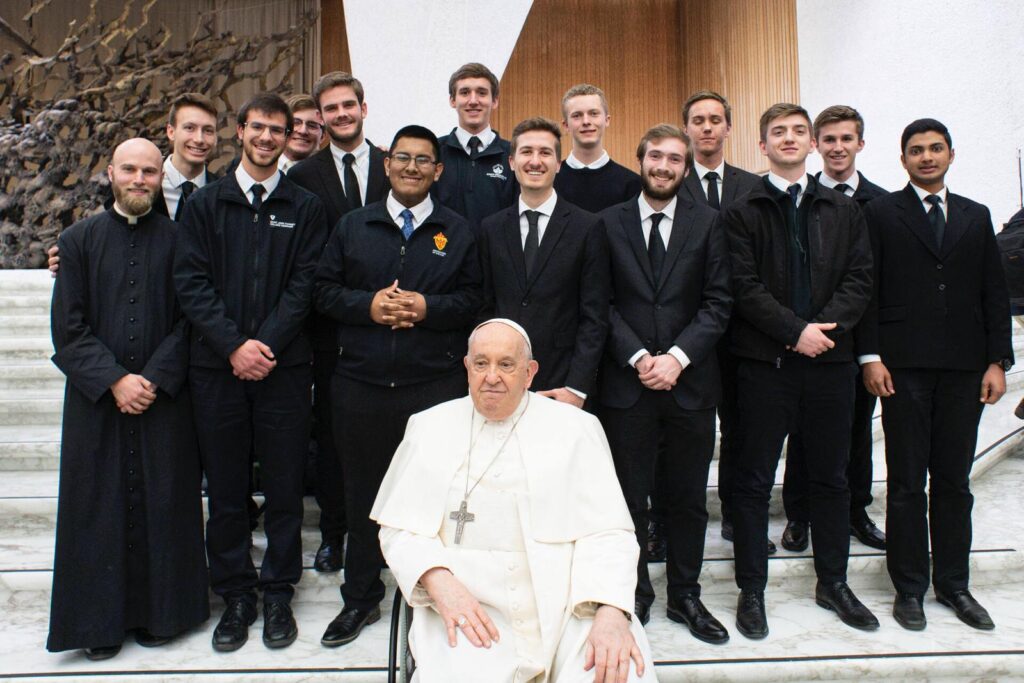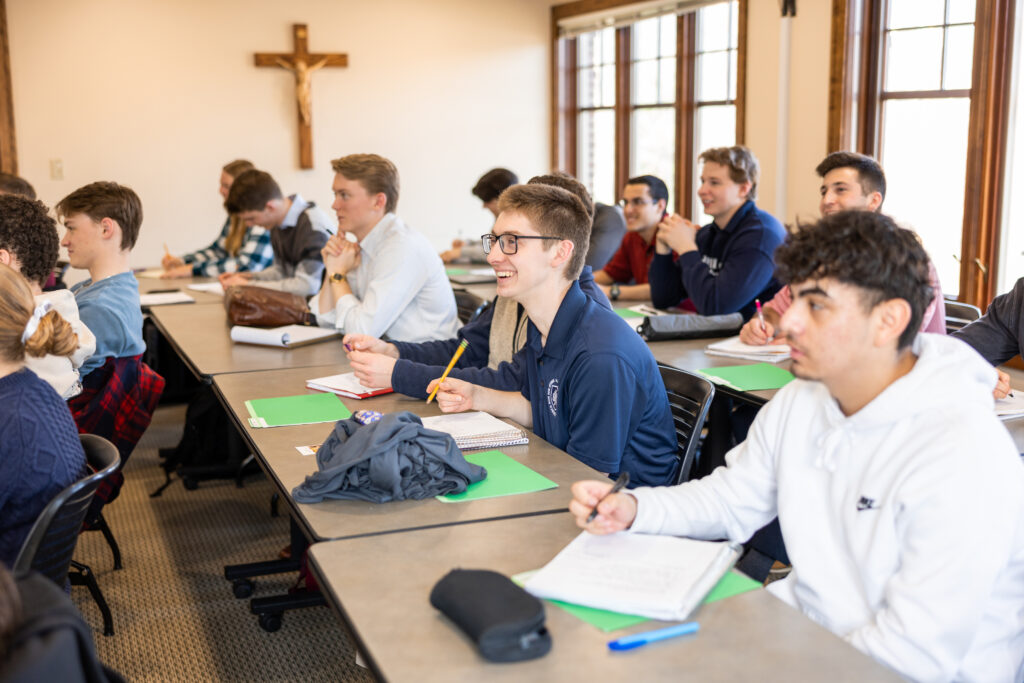The spring 2005 and summer 2005 issues of Logos: A Journal of Catholic Thought and Culture demonstrate again what it means to speak of this quarterly interdisciplinary journal as a demonstration of Catholic Studies in action. Now in its eighth year of publication, this internationally distributed journal continues to exemplify excellent thinking in every area of the interdisciplinary territory of Catholic Studies, including articles on Catholic social thought, philosophy, theology, literature and the arts, history, science and public policy. The spring 2005 issue includes an interview conducted by the Center for Catholic Studies director Don Briel and Father Paul Murray with the Irish artist Patrick Pye. The painting by Patrick Pye discussed in this excerpt is now permanently displayed in the conference room in Sitzmann Hall, the home of the UST Center for Catholic Studies.
Paul Murray:Perhaps you’d like to say something, Patrick, about a painting of yours which many of us greatly admire, “The Theologian in His Garden.” What inspired you, for example, to start working on this theme? Or what prompted you to place together, in one painting, two figures who are so different one from one another, St. Christopher and St. Jerome? Did the work take you a long time to finish? Was it a delight to paint?
Patrick Pye:“The Theologian in His Garden” was inspired by one of Giovanni Bellini’s paintings. Of course, I love painting, I’m just mad about painting and Bellini fascinates me, has always fascinated me, as long as I can remember. In one of his paintings, there is a sort of interior, a little sort of a corner of a building with arches opening to the wonderful world of nature. There are three saints in this painting. It’s a late-ish painting in a church in Venice and it has St. Christopher with the Child Jesus in the left-hand corner standing beside a tomb, and on the other side of the tomb, a bishop whose name I can’t remember, and then, on a sort of rock, with a background of mountains, Jerome.
This painting just fascinated me. I wanted to do a painting which had this contemplative figure of the intellectual, Jerome, with his book and this unintellectual fellow who had crossed the river with the Child Jesus on his shoulder and who hardly knew what he was doing. I thought about it for two years and I did some wretched little sketches in which the format remained upright, and then one spring — God bless spring! — I thought I needed a horizontal format. I wanted an Eden landscape, a sort of innocent-Eden, unnatural landscape with the two saints as if there were nobody else in the world. It took a little figuring out, but eventually I got there, and when I actually painted that painting nothing went wrong. Usually terrible things happen. Nothing went wrong, and I just did it from start to finish. It took a long time. I took my time over it. It took about, maybe, three months. It went very steadily and slowly and smoothly.
Don Briel:It’s an extraordinary work, really. In looking at the landscape of the garden I had the sense that with the exception of the budding growth emerging from Christopher’s staff and from Jerome’s lectern and the small clump of daffodils in the corner of the painting, there are no signs of life. It is as if it were a portrayal of the loss of Eden with the sole mediation of the two saints disclosing the hidden Word. But perhaps this was not your intention. It was rather this pure simplicity that you had in mind. [In reflecting on this painting, Brian Lynch argued that the work was marked by a series of tensions but transformed by a mediating presence. “Most of all,” he wrote, “look at the extraordinary hammer-like rock on the left and the huge blunt arrowhead shape that seems to have been fired out of it across the middle ground of the image. This ideal world has an explosion in it, unexplained and inexplicable, but contained, not disruptive of the general peace. The Veil of Appearance is torn but the rent is invisibly mended. No one else could have imagined or painted this picture. It is, literally, incomparable.”]
Patrick Pye:I like very much the innocence, the fantasy of the early painters where St. Christopher becomes a giant, or where Jerome is under a tree — but it could be a cloud — and then the possibilities for humanity that are opened up by such extraordinary people.
We encourage friends and supporters of the Center for Catholic Studies to stay in touch with the intellectual vitality of Christianity by subscribing to Logos. Your support of our journal will also help to enhance the international reputation of the center.
For subscription information, highlights from all our issues, as well as an index of all our articles, please visit our Web site at www.stthomas.edu/cathstudies/logos or call us at (651) 962-5702.




